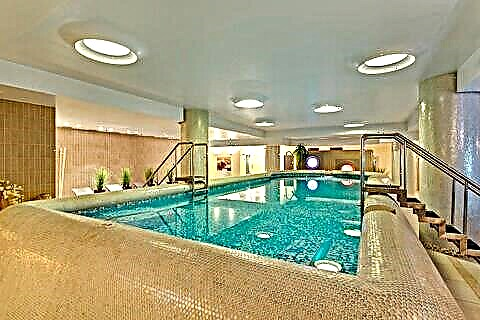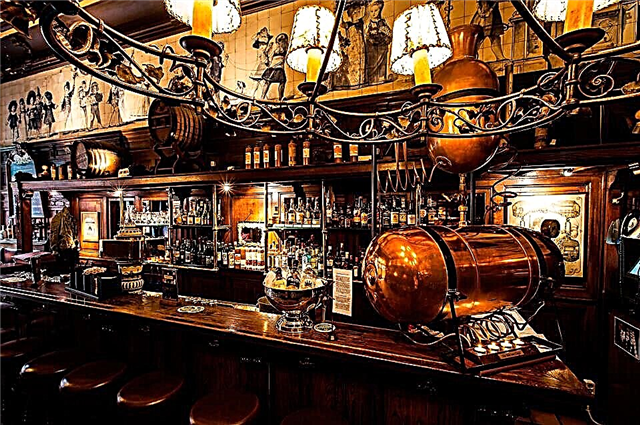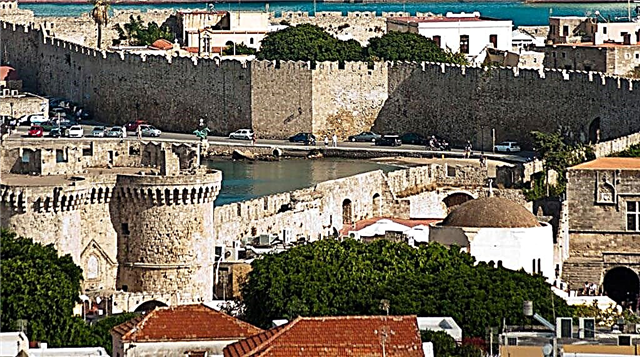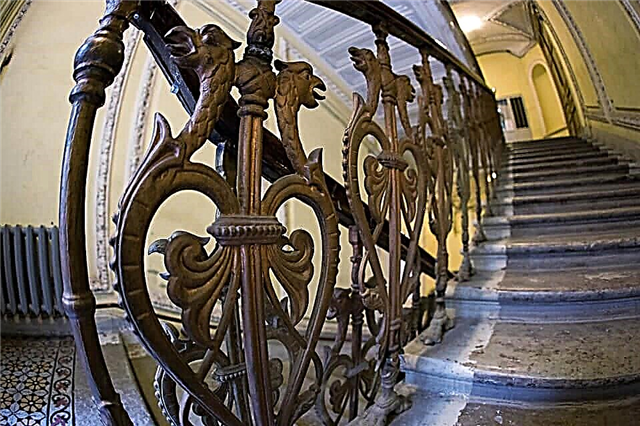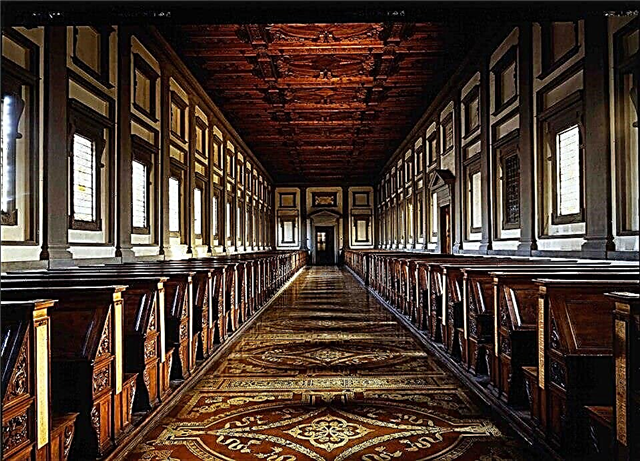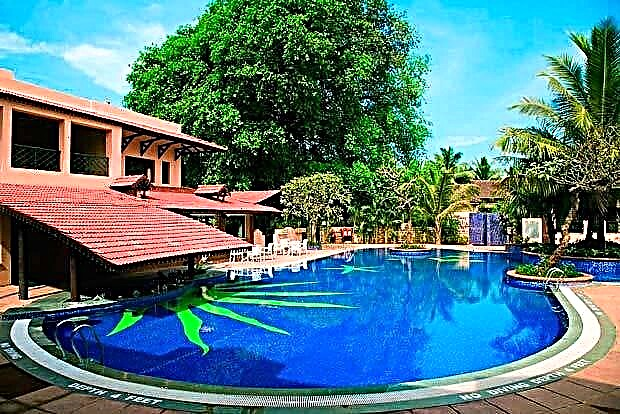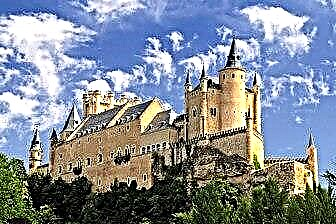Like many cities in Spain, Segovia can literally be called an open-air museum. Here, in a small area, there are so many attractions that it seems as if History itself settled among the stone walls of old houses. The grandiose Roman aqueduct, which has survived millennia, along with the Alcazar and the Cathedral - that's what tourists from all over the world come here for.
Segovia still has churches and monasteries built during the Early Middle Ages. It seems that time has absolutely no power over their powerful walls. Several small museums contain collections of ancient artifacts, carefully preserved for future generations. The silent city squares may still remember the unhurried pace of royal processions and the clash of weapons of the noble Cortes.

The best hotels and hotels at affordable prices.
from 500 rubles / day
What to see and where to go in Segovia?
The most interesting and beautiful places for walking. Photos and a short description.
Aqueduct
The Roman aqueduct in Segovia is the longest structure of this type in Western Europe, preserved from ancient times. Its length is 728 meters, height is 28 meters. There is still controversy regarding the date of construction, gradually scientists are inclined to the version that it was erected during the time of Emperor Vespasian in the 1st century. It used to be part of a multi-kilometer plumbing system.

Alcazar
Royal fortress, built on a rock at the confluence of two rivers. Alcazar was founded by the Arabs around the 9th century, the first mention of it dates back to the 11th century. After the expulsion of the Moors from the Iberian Peninsula, the fortress became the seat of the kings of Castile. Isabella of Castile was crowned here, and here she married Ferdinand of Aragon. Currently, there is a museum on the territory of the fortress.

Segovia Cathedral
The first mention of the temple dates back to the 12th century, but this structure was destroyed as a result of the uprising of the Castilian feudal lords in the 16th century. The construction of the new cathedral lasted for almost a century and a half. Work began under the direction of the architect J. G. de Ontagnon (hereinafter - under the direction of his son Rodrigo). Due to its grand size and rich interior, the temple looks more like a palace than a house of God.

Plaza Mayor
Almost every Spanish city has its own Plaza Mayor. Moreover, these areas are often very similar to each other. The place, as it were, performs the function of a mandatory attribute and a distinctive sign. The central square of Segovia, as elsewhere, is filled with café tables and people walking. It is surrounded on all sides by historical buildings of the XIV-XV centuries. While walking around the city, the tourist will definitely pass through the Plaza Mayor several times.

Church of La Vera Cruz
The temple was built by the Knights of the Templar Order in the distant XII century. Later the building was taken over by the Order of Malta. At the beginning of the 20th century, it passed to the state, after which restoration measures began here. During the work inside the temple, original frescoes were discovered, which are more than 500 years old. During religious holidays, a costume procession takes place from the city to the church.

Monastery of San Antonio El Real
The monastery was founded by King Enrique IV in 1455. Previously, his hunting grounds were located in this place. The monastery should be visited for its magnificent architecture, which can be defined as a mixture of Gothic, Mudejar and Plateresque. The facade of the building is decorated with the coat of arms of the Catholic kings; one of the chapels is painted by Flemish craftsmen who belonged to the Utrecht school.

El Parral monastery
El Paral was founded by the Marquis de Vilhena (a powerful royal favorite) in 1447. Until now, the church facade is decorated with the family coats of arms of this aristocrat. The monastery was built according to the project of J. Guasu. Here the brothers of the Jeronymite Order found refuge. El Paral is the last active monastery of this monastic community, which today numbers only a few people.

Church of San Esteban
Romanesque temple of the XII-XIII centuries, which has gone through many reconstructions in its lifetime. Its architectural appearance finally took shape only in the 18th century. The bell tower of the cathedral can be seen from anywhere in the city due to its impressive size (53 meters in height). Experts believe that the church is the best example of the Spanish-Romanesque style, although this opinion is not generally accepted.

Church of San Millan
The temple is located on the way from the bus station to the Roman aqueduct, so it is almost impossible to miss this attraction. This church is one of the oldest in the city. It is believed that it was erected in the XI-XII centuries. The building was built in the Romanesque style, which is characterized by rough shapes, massive walls, narrow windows and rather simple exterior decoration.

Church of San Martin
The church building is located in the main square of Segovia. In terms of age, the temple rivals San Millan, as it was also erected in the 11th century. Before the expulsion of the Moors, there was an Arab mosque in its place. The church is active - services are regularly held here. The interior decoration is quite ascetic; some parts of the walls are in dire need of restoration. The figures of the four prophets are installed on the facade of the building.

House-Museum of Antonio Machado
Antonio Machado is a Spanish poet, thinker and playwright. In his work, he adhered to the traditions of Spanish modernism, generously diluted with folk poetry. A. Machado lived in the house on Desamparados Street from 1919 to 1932. During this time, having teamed up with artists, he founded the People's University. After the death of the poet, a museum named after him was founded in the house.

Casa del Sol Museum
"Casa del Sol" means "house of the sun" in Spanish. This is a small museum that often goes unnoticed on the main tourist routes. It houses primitive tools, samples of Roman mosaics, works of art confiscated from monasteries during the expropriation of church property, sculptures, prints and an interesting collection of glass.

Esteban Vicente Museum of Contemporary Art
The collection is located in the palace of King Enrique IV, which was built in the 15th century. It consists of 150 paintings, drawings and sculptures by the artist Esteban Vicente, a representative of Abstract Expressionism. He almost never lived in Spain, but after his death he bequeathed that his works should be returned to his homeland in Segovia. The museum was created in the 2000s according to the last will of the master.

Casa de los Picos
The landmark got its name because its facade is faced with pyramidal blocks. The building is located on the way from the Plaza Mayor to the aqueduct. The house used to belong to the de la Jos family. The family coat of arms of this family still adorns the wall. Inside is an art school and a small exhibition gallery, which can be visited free of charge.

Palace of La Granja de San Idelfonso
La Granja is a palace complex located in the city of San Idelfonso, located 15 km from Segovia. It is a suburban royal residence. Before the construction of La Granja, the hunting grounds of the Castilian monarchs were located here, later - the monastery lands. The construction of the complex began by order of Philip V at the beginning of the 18th century.


